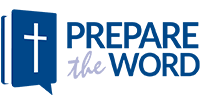The hopes and fears of all the year
"The people who walked in darkness have seen a great light," proclaims the reading from the Book of Isaiah for the Nativity of the Lord Mass at Midnight. The struggling economy heads up many lists of the "top ten" news stories for the year . . . .
"The people who walked in darkness have seen a great light," proclaims the reading from the Book of Isaiah for the Nativity of the Lord Mass at Midnight. The struggling economy and the toll in human suffering it has exacted head up many lists of the "top ten" news stories for the year. Though the prognosis has been rather dark and gloomy most of 2009, rays of light have broken through, especially recently.
Despite a $787 billion federal stimulus package, much of the U.S. economy continued to sputter throughout the first half of the year. The jobless rate topped 10 percent, scores of banks failed, the federal deficit tripled to a record $1.4 trillion, and stocks fell to their lowest levels since 1997 before rallying. Yet investment banks' profits surged, triggering public anger and efforts in Washington to crack down on Wall Street bonuses.
The economy was among the major stories of the year for religious institutions, too, as the recession forced cutbacks at a great variety of faith-related organizations—denominations, houses of worship, relief agencies, colleges and seminaries, and publishing houses, among others.
The bleakness of the first half of the year has gradually given way to a more hopeful, if still mixed, prognosis. The economy grew at a 2.2 percent pace in the third quarter, ending a record for straight quarters of decline. That signaled that the deepest and longest recession since the 1930s had ended and the economy had entered a new delicate phase of recovery.
Signs suggest the economy will end the year on a stronger footing. Growth is expected to be at or near 4 percent in the October-to-December quarter. That would mark the strongest showing since the first quarter of 2006—well before the recession began.
Home resales surged in November to the highest level in nearly three years, reflecting an extraordinary level of federal support that has pulled the housing market back from the brink of collapse. Sales of new homes plunged unexpectedly, however, providing greater evidence that economy recovery is fragile at year-end.
